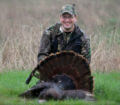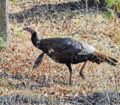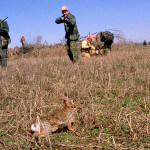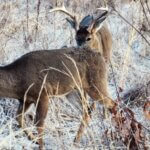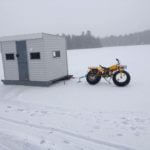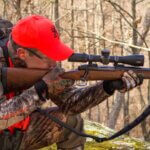Editor’s Note: My longtime friend, Preston Pittman of Pickens, Mississippi, one of the nation’s top competitive turkey callers, has won five turkey-calling championships. Not only is Pittman a contest winner, Preston Pittman actually becomes the turkey when hunting. On a “David Letterman Show” some years ago, Pittman strutted and gobbled and preened himself just like a wild turkey would. According to Pittman, if you’re hoping to take turkeys in the spring, you must observe turkey body language with your binoculars and use that knowledge to become the turkey.
 Question: Preston, how do you become a turkey when you’re in the woods?
Question: Preston, how do you become a turkey when you’re in the woods?
Pittman: I’m not only trying to become the turkey, I’m attempting to become the environment in which the wild turkey lives. I want to sound like everything that is natural in the turkey’s environment. I want to convince the turkey that I’m a hen looking for love. Depending on where I am, I try to sound like a tom turkey when he’s walking through the woods. Now, I only use these tactics when I’m on totally-private land, and I don’t have to worry about anyone else being around.
 If I’m trying to move from Point A to Point B, and I know there’s a gobbler close-by, I take the tip of my toe and scratch in the leaves about every third step. I use the cadence: scratch, scratch-scratch, scratch, and then I move. I take about three or four steps, and while I’m taking those steps, I’m clucking and purring like a contented hen. The way you become the turkey is by watching turkeys as they move through the woods. Observe their body language and the different noises they make, besides the calling they do as they move quietly through the woods. When a turkey is scratching, it almost always starts with its left foot. A turkey will always do one scratch, then two scratches and sometimes a third scratch. So, as I walk through the woods, I use that same cadence. Now again, let me reiterate. You don’t want to sound like a turkey walking through the woods when you’re close to a gobbler on public lands, because if there are other hunters around, and you’re making the sound that will call those other hunters to you, you may be mistaken for a turkey. Do not use this tactic in public woods. Only use it on private property when you know no other hunters are there.
If I’m trying to move from Point A to Point B, and I know there’s a gobbler close-by, I take the tip of my toe and scratch in the leaves about every third step. I use the cadence: scratch, scratch-scratch, scratch, and then I move. I take about three or four steps, and while I’m taking those steps, I’m clucking and purring like a contented hen. The way you become the turkey is by watching turkeys as they move through the woods. Observe their body language and the different noises they make, besides the calling they do as they move quietly through the woods. When a turkey is scratching, it almost always starts with its left foot. A turkey will always do one scratch, then two scratches and sometimes a third scratch. So, as I walk through the woods, I use that same cadence. Now again, let me reiterate. You don’t want to sound like a turkey walking through the woods when you’re close to a gobbler on public lands, because if there are other hunters around, and you’re making the sound that will call those other hunters to you, you may be mistaken for a turkey. Do not use this tactic in public woods. Only use it on private property when you know no other hunters are there.
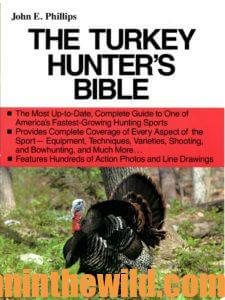 To learn more about turkey hunting, check out John E. Phillips’s book, “The Turkey Hunter’s Bible,” available in Kindle and print at https://www.amazon.com/PhD-Gobblers-John-E-Phillips/dp/1542745071.
To learn more about turkey hunting, check out John E. Phillips’s book, “The Turkey Hunter’s Bible,” available in Kindle and print at https://www.amazon.com/PhD-Gobblers-John-E-Phillips/dp/1542745071.

